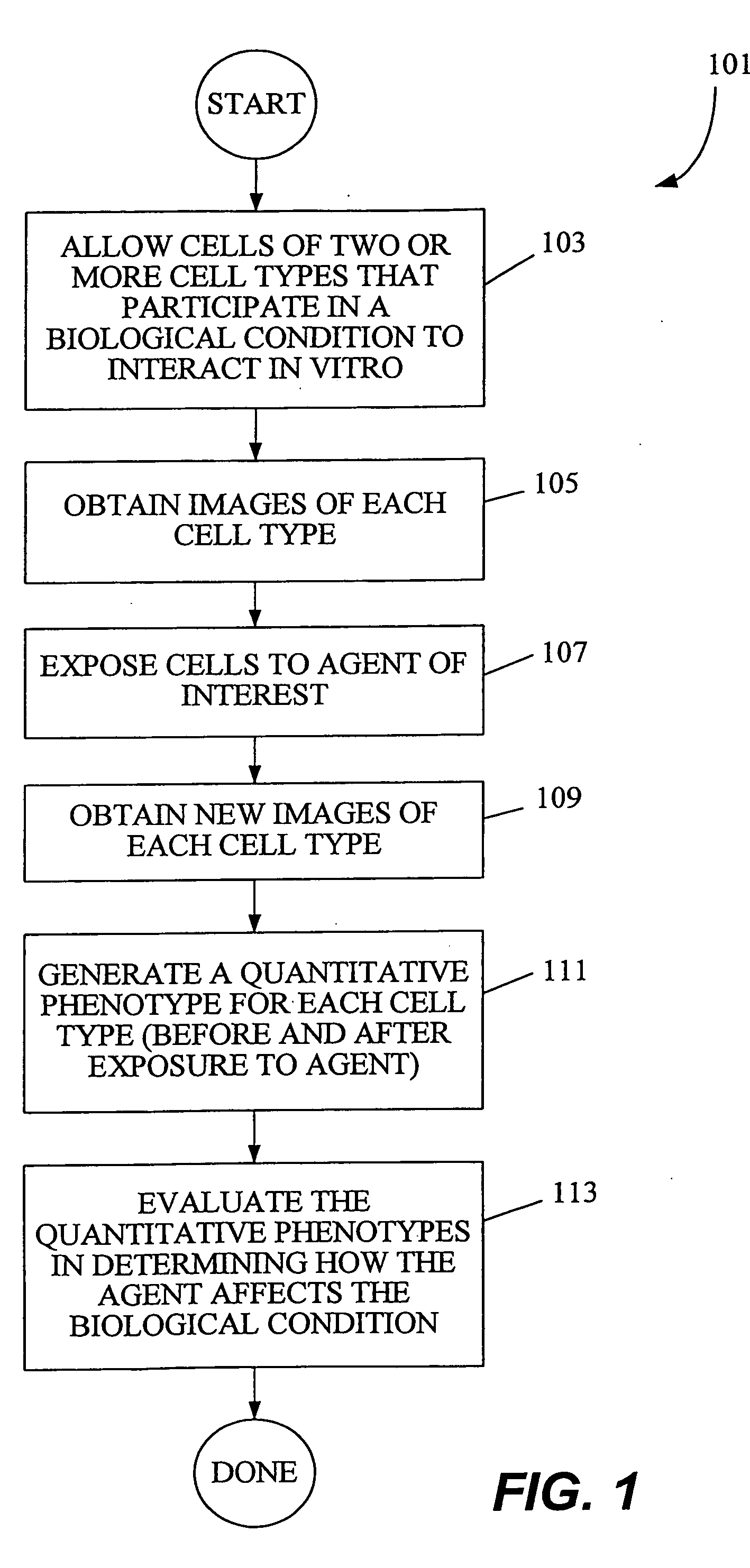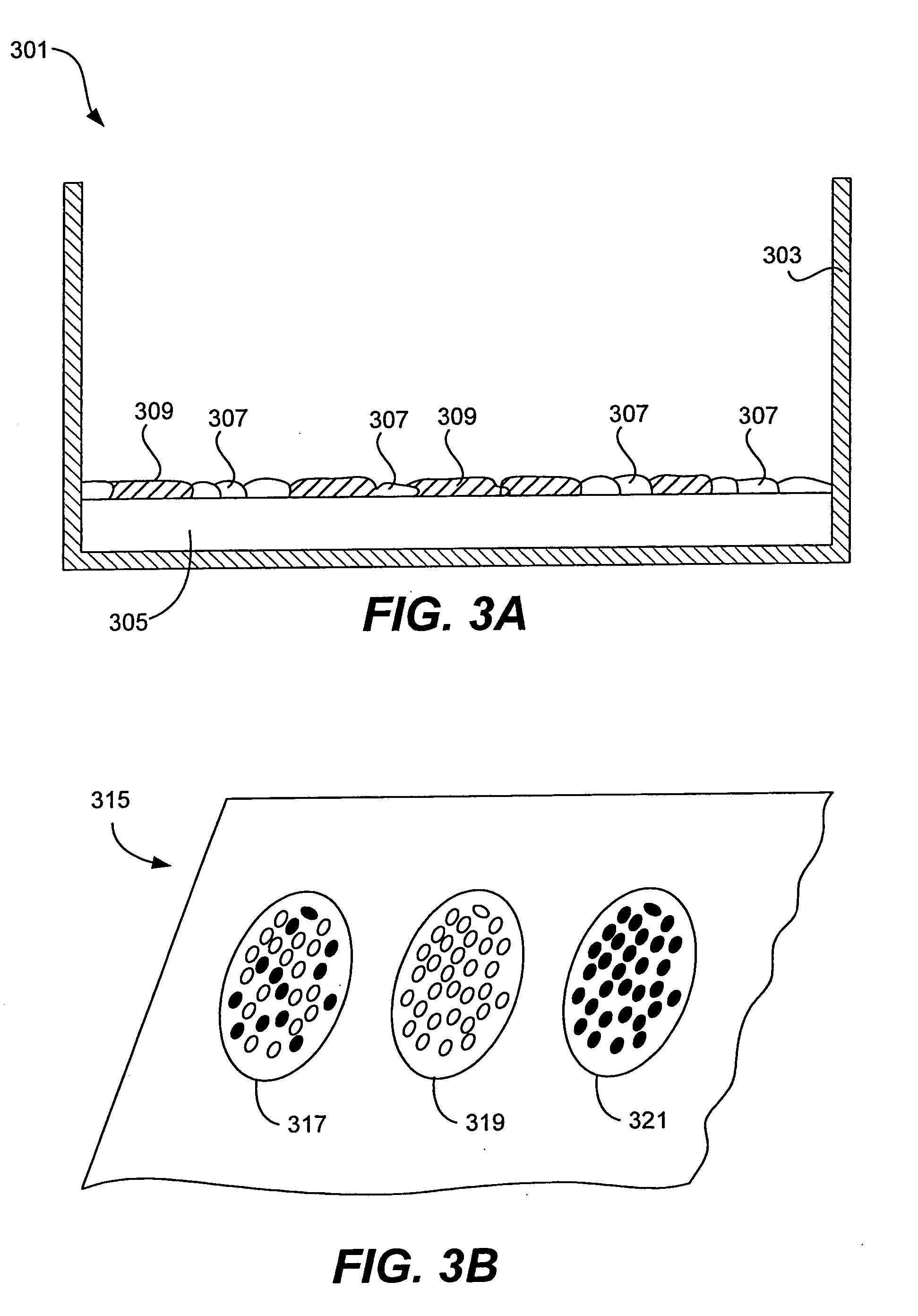Method of characterizing potential therapeutics by determining cell-cell interactions
- Summary
- Abstract
- Description
- Claims
- Application Information
AI Technical Summary
Benefits of technology
Problems solved by technology
Method used
Image
Examples
Embodiment Construction
[0026] Overview
[0027] Generally, this invention relates to image analysis processes (methods) and apparatus allowing image analysis. But the image analysis is provided the context of a higher level process that involves developing experiments and research strategies for understanding certain biological conditions and developing agents for effectively alter these conditions. FIG. 1 presents a high-level process flow chart setting forth a sequence that might typically be followed in accordance with this invention.
[0028] As shown in FIG. 1, a research process 101 begins at 103 where two or more cell types are caused to interact with one another. Typically, these are cell types that are known to interact (or suspected to interact) in producing and / or maintaining the biological condition of interest. For example, cancerous epithelial cells and endothelial cells interact in some manner to facilitate vascularization (a biological condition) of tumors. Co-culturing the two or more cell ty...
PUM
 Login to View More
Login to View More Abstract
Description
Claims
Application Information
 Login to View More
Login to View More - R&D
- Intellectual Property
- Life Sciences
- Materials
- Tech Scout
- Unparalleled Data Quality
- Higher Quality Content
- 60% Fewer Hallucinations
Browse by: Latest US Patents, China's latest patents, Technical Efficacy Thesaurus, Application Domain, Technology Topic, Popular Technical Reports.
© 2025 PatSnap. All rights reserved.Legal|Privacy policy|Modern Slavery Act Transparency Statement|Sitemap|About US| Contact US: help@patsnap.com



